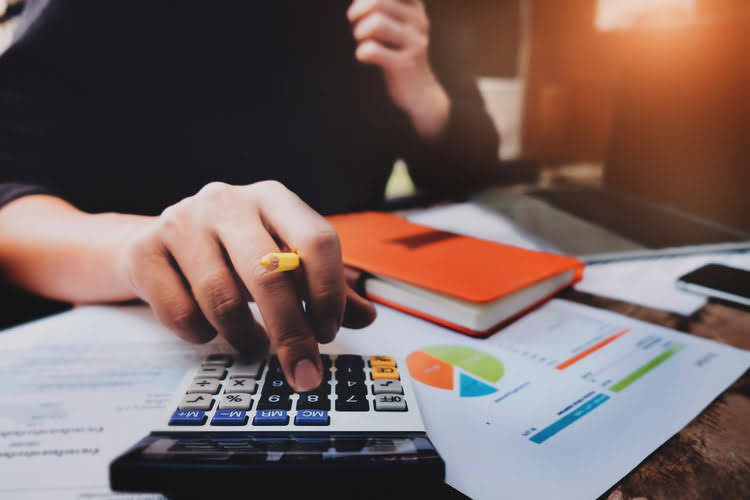
The composite method is applied to a collection of assets that are not similar and have different service lives. For example, computers and printers are not similar, but both are part of the office equipment. Depreciation on all assets is determined by using the straight-line-depreciation method. Explore the nuances of double declining balance depreciation, its calculation, and how it compares to other methods. Because the equipment has a useful life of only five years, it is expected to lose value quickly in the first few years of use.
Practical Applications of the DDB Method

This concept behind double declining depreciation the DDB method matches the principle that newly purchased fixed assets are more efficient in the earlier years than in the later years. But as time goes by, the fixed asset may experience problems due to wear and tear, which would result in repairs and maintenance costs. That’s why depreciation expense is lower in the later years because of the fixed asset’s decreased efficiency and high maintenance cost. These methods also affect the balance sheet, where accumulated depreciation reduces asset book value, influencing ratios like debt-to-equity. Companies with significant fixed assets must consider these impacts when choosing a method, as it influences external perceptions and internal decisions, such as capital budgeting and resource allocation. The choice of depreciation method affects financial statements, influencing metrics like net income, asset book value, and equity.
- Double declining balance depreciation is an accelerated depreciation method that charges twice the rate of straight-line deprecation on the asset’s carrying value at the start of each accounting period.
- Under the DDB depreciation method, the equipment loses $80,000 in value during its first year of use, $48,000 in the second and so on until it reaches its salvage price of $25,000 in year five.
- Leveraging AI in accounting allows businesses to focus on strategic decision-making, reduce errors, and enhance overall financial management.
- Even if the double declining method could be more appropriate for a company, i.e. its fixed assets drop off in value drastically over time, the straight-line depreciation method is far more prevalent in practice.
- In summary, the Double Declining Balance method is ideal for assets that lose value quickly and for businesses looking to manage their tax liabilities effectively.
Advantages and Disadvantages of Double Declining Balance Depreciation
In summary, while the Double Declining Balance method offers significant advantages, it’s essential to weigh these against its potential drawbacks to determine if it’s the right choice for your business. On top of that, it is worth it for small business owners, larger businesses and anyone owning a rental, to familiarize themselves with Section 179 depreciation and bonus depreciation. Business News Daily provides resources, advice and product reviews to drive business growth. Our mission is to equip business owners with the knowledge and confidence to make informed decisions. Our solution has the ability to record transactions, which will be automatically posted into the ERP, automating 70% of your account reconciliation process. Increase your desired income on your desired schedule by using Taxfyle’s platform to pick up tax filing, consultation, and bookkeeping jobs.
Can you switch to another depreciation method later?
The Double Declining Balance Method (DDB) is a form of accelerated depreciation in which the annual depreciation expense is greater during the earlier stages of the fixed asset’s useful life. The double declining balance method accelerates depreciation charges instead of allocating it evenly throughout the asset’s useful life. Proponents of this method argue that fixed assets have optimum functionality when they are brand new and a higher depreciation charge makes sense to match the fixed assets’ efficiency. The units of production method ties depreciation to asset usage, aligning expense recognition with output levels. It’s relevant for assets with fluctuating usage patterns, like vehicles or manufacturing equipment.


This method is simpler and more conservative in its approach, as it does not account for the front-loaded wear and tear that some assets may experience. While it may not reflect an asset’s actual condition as precisely, it is widely used for its simplicity and consistency. On the other hand, with the double declining balance depreciation method, you write off a large depreciation expense in the early years, right after you’ve purchased an asset, and less each year after that. With the double declining balance method, you depreciate less and less of an asset’s value over time. That means you get the biggest tax write-offs in the years right after you’ve purchased vehicles, equipment, tools, real estate, or anything else your business needs to run.
- The accounting concept behind depreciation is that an asset produces revenue over an estimated number of years; therefore, the cost of the asset should be deducted over those same estimated years.
- The DDB method is more complex to calculate and may not fully depreciate the asset over its useful life.
- The double declining balance method (DDB) describes an approach to accounting for the depreciation of fixed assets where the depreciation expense is greater in the initial years of the asset’s assumed useful life.
- Since the assets will be used throughout the year, there is no need to reduce the depreciation expense, which is why we use a time factor of 1 in the depreciation schedule (see example below).
- Multiply the straight line depreciation rate by 2 to get the double declining depreciation rate.
Canada Revenue Agency specifies numerous classes based on the type of property and how it is used. Under the United States depreciation system, the Internal Revenue Service publishes a detailed guide which includes a table of asset lives and the applicable conventions. The table also incorporates specified lives for certain commonly used assets (e.g., office furniture, computers, automobiles) which override the business use retained earnings lives. The straight-line depreciation is calculated by dividing the difference between assets pagal sale cost and its expected salvage value by the number of years for its expected useful life. Understanding the tools available for double declining balance depreciation can greatly enhance your financial management skills. By utilizing calculators, templates, and educational resources, you can make informed decisions that benefit your business.

- Alternatively, the specific month convention can be utilized for a more detailed approach.
- By reducing the value of that asset on the company’s books, a business can claim tax deductions each year for the presumed lost value of the asset over that year.
- The journal entry will be a debit of $20,000 to Depreciation Expense and a credit of $20,000 to Accumulated Depreciation.
- Every year you write off part of a depreciable asset using double declining balance, you subtract the amount you wrote off from the asset’s book value on your balance sheet.
- But you can reduce that tax obligation by writing off more of the asset early on.
This results in higher depreciation charges early in the asset’s life, making it suitable for assets like computers or vehicles that wear out quickly. A common variant is the double-declining balance method, which uses double the straight-line rate. For an asset with a five-year life, the straight-line rate is 20%, translating to 40% under the double-declining balance method. This requires the asset’s initial cost, estimated salvage value, and useful life. For example, if machinery costs $100,000, with a $10,000 salvage value and a 10-year life, the annual depreciation expense is $9,000. This method is favored under GAAP and IFRS for its simplicity and predictable expense pattern.

Double Declining Balance Depreciation is a way to calculate how much value an asset loses over time. In summary, the Double Declining Balance method is ideal for assets that lose value quickly and for businesses looking to manage their tax liabilities effectively. Consider a widget manufacturer that purchases a $200,000 packaging machine with an estimated salvage value of $25,000 and a useful life of five years. Under the DDB depreciation method, the equipment loses $80,000 in value during its first year Bookkeeping for Veterinarians of use, $48,000 in the second and so on until it reaches its salvage price of $25,000 in year five.